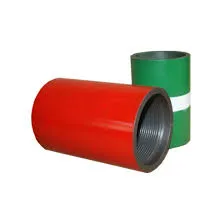- Afrikaans
- Albanian
- Amharic
- Arabic
- Armenian
- Azerbaijani
- Basque
- Belarusian
- Bengali
- Bosnian
- Bulgarian
- Catalan
- Cebuano
- Corsican
- Croatian
- Czech
- Danish
- Dutch
- English
- Esperanto
- Estonian
- Finnish
- French
- Frisian
- Galician
- Georgian
- German
- Greek
- Gujarati
- Haitian Creole
- hausa
- hawaiian
- Hebrew
- Hindi
- Miao
- Hungarian
- Icelandic
- igbo
- Indonesian
- irish
- Italian
- Japanese
- Javanese
- Kannada
- kazakh
- Khmer
- Rwandese
- Korean
- Kurdish
- Kyrgyz
- Lao
- Latin
- Latvian
- Lithuanian
- Luxembourgish
- Macedonian
- Malgashi
- Malay
- Malayalam
- Maltese
- Maori
- Marathi
- Mongolian
- Myanmar
- Nepali
- Norwegian
- Norwegian
- Occitan
- Pashto
- Persian
- Polish
- Portuguese
- Punjabi
- Romanian
- Russian
- Samoan
- Scottish Gaelic
- Serbian
- Sesotho
- Shona
- Sindhi
- Sinhala
- Slovak
- Slovenian
- Somali
- Spanish
- Sundanese
- Swahili
- Swedish
- Tagalog
- Tajik
- Tamil
- Tatar
- Telugu
- Thai
- Turkish
- Turkmen
- Ukrainian
- Urdu
- Uighur
- Uzbek
- Vietnamese
- Welsh
- Bantu
- Yiddish
- Yoruba
- Zulu
tubing crossover
Understanding Tubing Crossover A Key Concept in Oil and Gas Industry
Tubing crossover is a significant term in the oil and gas industry, particularly in well drilling and completion processes. It refers to the transition between different sizes of tubing used in the production of oil and gas from the subsurface reservoirs to the surface. This process is crucial for ensuring efficient extraction and transportation of hydrocarbons.
In the context of well operations, tubing serves as a conduit for the flow of oil, gas, and other fluids. Different reservoir conditions often necessitate the use of various tubing sizes; thus, tubing crossover becomes essential. This crossover typically occurs at several points in the production string, where the diameter of the tubing changes to accommodate varying flow requirements or different pressure environments within the well.
One defining characteristic of tubing crossover is the careful engineering and design involved. Engineers must consider factors such as pressure ratings, flow rates, and the physical properties of the fluids being transported. Properly designed crossover connections help prevent issues like pressure loss, fluid turbulence, and even potential system failures. Failure to implement effective tubing crossover can lead to costly downtime and challenges in production optimization.
tubing crossover

Moreover, tubing crossover is not just about physical size changes; it can also involve the integration of various materials and technologies. Different tubing materials have distinct properties that can affect their performance, such as resistance to corrosion or tensile strength. Selecting the right materials for crossover points is necessary to enhance the longevity and reliability of the entire production system.
Additionally, advancements in technology have played a significant role in refining tubing crossover processes. Innovative techniques like computer modeling and simulations allow engineers to predict flow dynamics and optimize the design of crossover sections. This technological integration not only improves efficiency but also ensures safer operation within harsh downhole conditions.
In conclusion, tubing crossover is a vital aspect of well completion and production in the oil and gas industry. Its significance cannot be overstated, as it influences the efficiency, safety, and cost-effectiveness of hydrocarbon extraction processes. As the industry continues to evolve, understanding and optimizing tubing crossover will remain a critical focus for engineers and companies aiming to enhance overall operational performance.
-
Tubing Pup Joints: Essential Components for Oil and Gas OperationsNewsJul.10,2025
-
Pup Joints: Essential Components for Reliable Drilling OperationsNewsJul.10,2025
-
Pipe Couplings: Connecting Your World EfficientlyNewsJul.10,2025
-
Mastering Oilfield Operations with Quality Tubing and CasingNewsJul.10,2025
-
High-Quality Casing Couplings for Every NeedNewsJul.10,2025
-
Boost Your Drilling Efficiency with Premium Crossover Tools & Seating NipplesNewsJul.10,2025







